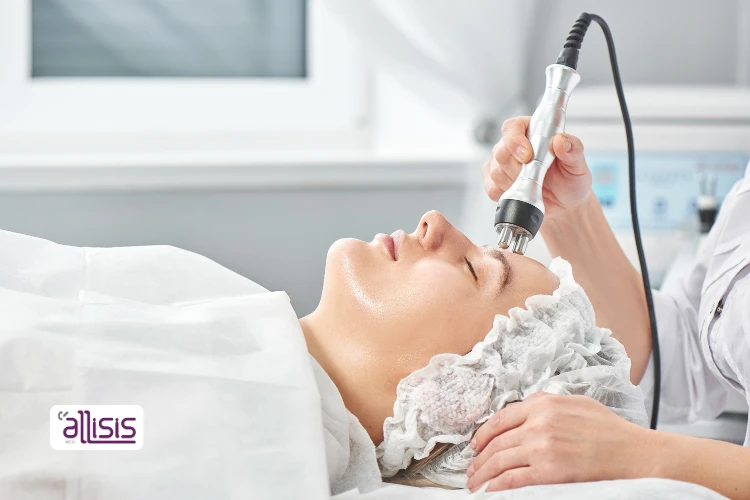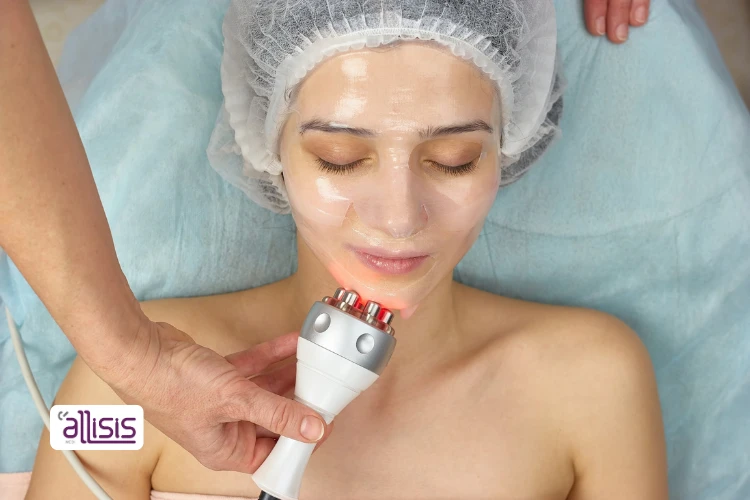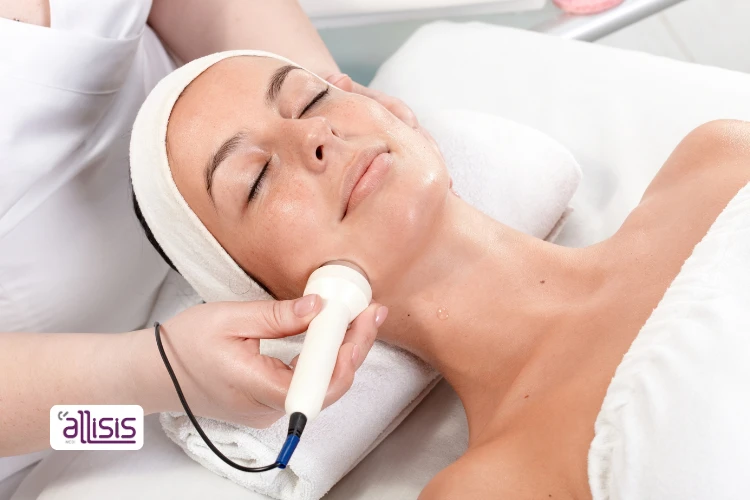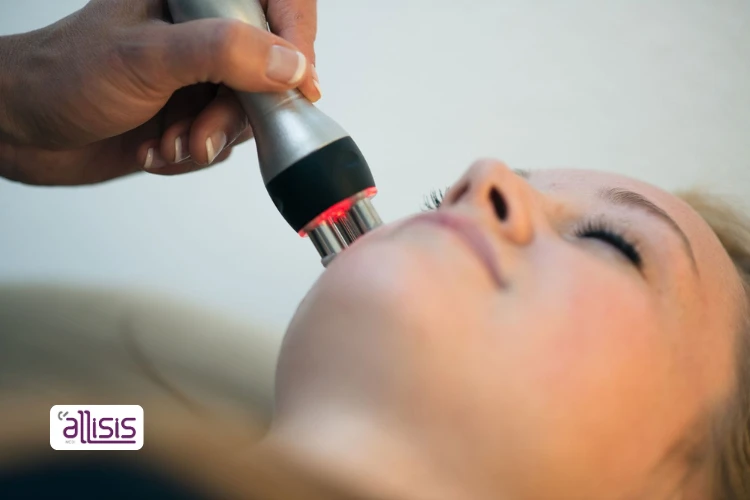RF skin tightening is the revolution in medico aesthetics. It has emerged as the most on-demand method to rejuvenate skin without going for painful invasive treatments. Comparing RF skin tightening to a traditional face-lift, it is a process of safety with guaranteed effectiveness.
RF is one of those features that have made the skincare world a major platform for technological advancement. It contains treatments for both professional and at-home users. The article will go over how RF works, the different options available for treatments, and their comparisons to other techniques. In this, you’ll understand why it’s taken as one of the best alternatives in skincare in these modern days.
How Does Radio Frequency for Skin Tightening Work?
Skin tightening by RF treatment is done by heating the deeper skin layer with the help of RF waves. Such a process results in an increase in the production of collagen and elastin, hence skin tightening.
The first RF technology for this purpose was Thermalift. Now several brands exist in the U.S. such as Exilis, Profound RF, Thermage, and Thermi. These heat the skin to 122°F–167°F 50–75°C. Research has shown that a temperature maintained above 115°F (46°C) for more than 3 minutes will induce the release of heat-shock proteins. These aid the body in the induction of new collagen fibers. The whole treatment procedure is less than an hour and almost painless. This has made it gain popular repute in non-invasive skin rejuvenation.

Which Parts of the Body Can Radio Frequency Treat?
RF non-surgical skin tightening is a treatment for loose skin, among other signs of aging, in several areas of the face and body. The following are the most frequently treated areas:
Face: the laxity of the cheeks, jawline, and the areas under the eyes are tightened with RF. RF also reduces fine lines and deep wrinkles on the forehead, mouth, and neck. It has been dubbed the “non-surgical facelift.”
Neck and Décolletage: RF tightens lax skin to improve texture in the neck and upper chest area where the first signs of aging are commonly seen. The “bat wings,” or loose skin of the upper arms are targeted by RF, thereby enhancing firmness and elasticity.
Abdomen: A number of people use RF for the skin tightening of the abdomen after heavy weight loss and pregnancy. The sagginess gets reduced, and there is partial improvement of the stretch marks.
Thighs: RF also treats loose or hanging skin of the thighs, particularly the inner thighs that may sag following weight loss or due to the aging process.
Buttocks: The skin of the buttocks is lifted and firmed up with RF treatment, giving it a round and firmer appearance.
Knees: In general, with the influence of gravity, the aging process, and all the other changes that occur along with weight gain or loss, the skin folds at the knee. RF skin tightening will help attenuate this laxity.
The Future of Skin Rejuvenation: Radio Frequency Skin Tightening
In the recent past, demand for RF treatment has been increasing quite fast. Professional services and devices for at-home use are becoming increasingly available. Future innovations in skin rejuvenation treatment will likely make it more precise and even briefer. Its combination with treatments like microneedling will also likely bring improved results. RF skin tightening is here to stay in contemporary skincare. It gives long-lasting youthful results without surgery.
Radio Frequency Compared to Other Methods of Skin Tightening
RF is suitable for most skin types, whereas some skin tightening treatments are not. It also offers long-term rejuvenation with repeated sessions. Here’s a comparison:
RF vs. Ultrasound Therapy: Ultrasound, like Ultherapy, treats deeper tissues. It gives a more dramatic lift but can be more painful and expensive compared with RF.
RF vs. Laser Skin Tightening: Lasers are good for superficial problems like pigmentation. However, they can incur downtime, which, unlike RF treatments, may not be suitable for individuals with darker skin.
RF vs. Surgical Facelifts: Surgery gives permanent results but at the risk of scars and long recovery time. RF provides gradual improvements with no downtime, hence a much safer alternative.

Professional vs. At-Home RF Machines: Which One Should You Choose?
When considering radio frequency tightening, most people choose between professional treatments and at-home devices. Of course, each has its pros and cons. Your decision will be based on your budget, convenience, and desired results.
Professional RF Machines
Professional RF treatments are either done by trained aestheticians or dermatologists. They have more sophisticated machines with deeper penetration and a more precise distribution of energy. Devices like Thermage, Morpheus8, and Venus Legacy give excellent results. They work best for deep skin laxity and profound wrinkles. Most of the time, more than one session is needed. However, they provide long-lasting skin firming and texture improvement. You can read the “What is the best RF machine?” blog to find out which device suits you well.
At-Home RF Devices
At-home RF devices, such as NuFACE Trinity and Tripollar Stop Vx, are convenient, cost-effective methods of skin tightening. They produce mild to moderate results. Not as strong as professional treatments, they can, with regular use, improve skin tone and elasticity over time.
Professional RF treatments are best for dramatic results. However, at-home devices are great for maintenance or gradual improvement. They can be a practical addition to any skincare routine.
What is Good to Know Before Radiofrequency Skin Tightening?
Some of those things that are helpful to consider when using radio frequency for skin tightening include:
Pre-consultation: This is the most important step. It is nice to understand your skin type, concerns, and goals. In this view, a dermatologist will, therefore, be in a vantage position to recommend radio frequency tightening as the best treatment for you.
Minimal Downtime: Radio-frequency skin tightening is non-invasive. Generally, there is minimal to no downtime. You can immediately resume daily activities. Your skin may be slightly red for a few hours.
Painless: The procedure is nearly painless. Most people experience a sensation of warmth, which is not irritating.
Multiple Sessions: For best results, the treatment requires multiple sessions. Most of the treatments are scheduled to be done a few weeks apart. It depends on what area has to be treated and the reception of your skin.
Realistic Expectations: RF skin tightening is effective, especially in mild skin laxity; however, it is not a replacement for invasive procedures. It is most useful in the early stages of skin aging.
AfterCare: Post-care instructions are given to you that need to be pursued. That involves avoidance of products that irritate the skin for a few days, and maintaining enough moisturizer that keeps good skin hydration.

Who Performs Radio Frequency Skin Tightening?
The licensed professionals such as dermatologists, plastic surgeons, and trained estheticians perform radio frequency skin tightening. The specialists undergo special training to perform the RF treatment safely.
RF skin tightening can be performed in physician offices or aesthetic spas depending on the treatment area and the clinic. However, a practitioner owning the certification of an RF device should have experience. This will ensure the best results and safety for the clients.
How Common is Radio Frequency (RF) Skin Tightening?
RF skin tightening has gained popularity in 2020, over 188,000 Americans tried some skin tightening procedures. Thus, this nonsurgical facelift is appropriate for all genders and skin types. The chances of developing any side effects such as skin discoloration, also known as hyperpigmentation, are very low. RF skin tightening is ideal for younger patients just beginning to show the first signs of aging skin laxity and fine lines. In that case, this would work contrastingly against someone who had very sagging skin. It is, therefore suitable for those who are in their early to mid-phase of skin aging.
What Are Radio Frequency Waves?
The radio frequency waves are a form of electromagnetic radiation. They are also similar to radio waves, WiFi signals, and microwaves. By radiation, it means to emit energy in the form of electromagnetic waves. It can have low or high energies. X-rays and gamma rays are examples of high-energy radiation. The class of radiation that RF waves belong to is the low-energy type.
The RF waves used in skin tightening treatments are about 1 billion times less energetic than X-rays. Although considered a form of radiation, RF waves are completely safe and non-invasive when employed appropriately.
Can I Apply Makeup or Skincare Products over My Radio Frequency Treatment?
You can apply makeup and skincare products post-RF skin tightening, but you need to follow some precautions. Immediately after a session, skin becomes warm and even red. It will, however, resolve after some hours. Do not apply anything over your skin immediately in a couple of hours before or after your treatment as they may lead to skin irritation. Apply only a very soft and very moisturizing product afterward, your skin is too sensitive. It is advisable to avoid using harsh exfoliants, active glycolic acid, and strong retinoids for the next couple of days. You are supposed to follow post-treatment care guidelines from your professional so that you can hold onto the results and avoid any irritation on your skin.

Does Radio Frequency Skin Tightening Results Last?
The RF skin tightening treatment is not permanent; however, it can last for quite a time. In due course, results are washed away by nature’s aging since collagen is shed with time. In general terms, results last between 6 months and 2 years, but this can be variable based on your skin type, age, lifestyle, and area that is treated. In general, it requires touch-up treatment for results to hold. A healthy lifestyle and a good skincare regime will also enhance the benefits of RF skin tightening.
Do Radio Frequency Skin Treatments Increase Your Chances of Getting Cancer?
RF skin treatments do not increase your chance of developing cancer. This is because they use non-ionizing energy and do not damage the DNA, unlike UV or X-rays. Many clinical trials and devices approved by the FDA prove that the technology is safe.
Conclusion: Experience the Fresh Beauty of RF
Radio frequency skin tightening is new in medico aesthetics. This non-invasive surgery combats aging improves texture, and makes skin firmer and younger. It stimulates collagen and elastin creation deep within the skin with long-lasting results and reduced time for recovery. It’s quite a simple and safe procedure for people showing the very first loosening or sagging of the skin and fine lines. No surgical intervention in this respect is required. It would be, therefore, better to choose the services of a specialist in respect of what suits you best.
RF technology remains the major active ingredient of most of the newer skin rejuvenation treatments, be it at the clinic or for home use. If you are concerned about keeping youthful skin, here is your safe and long-lasting treatment.
FAQ
1. How long does RF skin tightening take to show results?
RF skin tightening typically shows initial results within a few weeks as collagen production increases. However, optimal results appear after multiple sessions, usually within 2 to 6 months.
2. Is RF skin tightening safe for all skin types?
Yes, RF skin tightening is generally safe for all skin types and tones. Unlike some laser treatments, RF does not rely on melanin, reducing the risk of hyperpigmentation in darker skin tones.
3. How many RF skin tightening sessions are needed?
The number of sessions varies depending on skin condition and treatment goals. Most people require 4 to 6 sessions spaced a few weeks apart for the best results.
4. Does RF skin tightening hurt?
No, RF skin tightening is a painless procedure. Most patients report a warm, soothing sensation during treatment with minimal to no discomfort.
5. What should I avoid after RF skin tightening?
After RF treatment, avoid direct sun exposure, harsh skincare products (such as retinoids and exfoliants), and excessive heat (like saunas) for at least 48 hours to prevent irritation.

